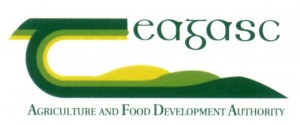Almost a Third of All Irish Farm Households are Economically Vulnerable

Almost one in three farm households nationally and half of all farms in the border region are in an economically vulnerable position. This was the main conclusion from a report analysing the viability of the farming sector published by Teagasc, the Agriculture and Food Development Authority.
The report, based on the Teagasc National Farm Survey, finds that 37 percent of farm businesses were economically viable in 2014, a further 31 percent of farms were only sustainable because of the presence of income earned outside of farming and almost one in three farm households were economically vulnerable as the farm business is not viable and there is no off-farm income present in the household.
Dr Thia Hennessy, Head of the Teagasc National Farm Survey and one of the authors of the report says: “The economic viability of farming in general improved last year but this is almost entirely driven by the strong performance of the dairy sector. We are increasingly moving to a two-tier farm sector where in 2014 over 80 percent of dairy farm businesses were viable compared to less than one in five cattle farm businesses.”
 The regional concentration of farm systems is also affecting the overall viability of the regional farm economies. “The viability of farming in regions such as the Border and the West which are dominated by cattle and sheep farms is of particular concern as less than one in 5 farm businesses are producing a profit that is sufficient to reward the labour and capital invested,” she says.
The regional concentration of farm systems is also affecting the overall viability of the regional farm economies. “The viability of farming in regions such as the Border and the West which are dominated by cattle and sheep farms is of particular concern as less than one in 5 farm businesses are producing a profit that is sufficient to reward the labour and capital invested,” she says.
The report finds that the availability of off-farm employment is crucial to safeguarding the economic well-being of a large number of farm households. Almost one-third of farm households or 24,000 households nationally rely on off-farm income to support both the household and the non-viable farm business.
The decline in off-farm employment has increased the vulnerability of many farm households. Almost 60 percent of farm households had an off-farm income in 2007 but this had decreased to 49 percent in 2012. Although a recovery in off-farm employment rates is apparent in the last two years, some regions seem to be recovering faster than others. “While almost one-third of farm households nationally are in an economically vulnerable position, this figure increases to 45 percent for the border region”, says Brian Moran co-author of the report. “The high concentration of cattle and sheep farming coupled with the relatively slow recovery in off-farm employment opportunities in the border region, leaves a large number of farm households in an economically vulnerable position.”

































